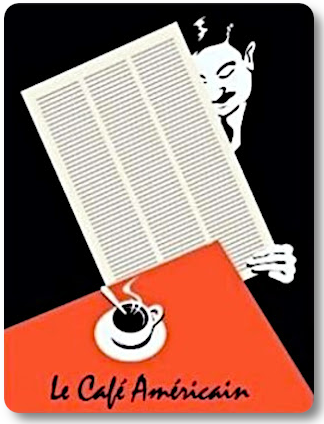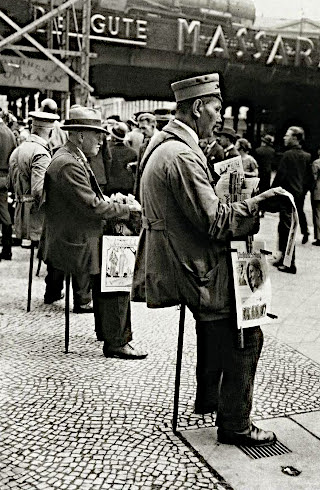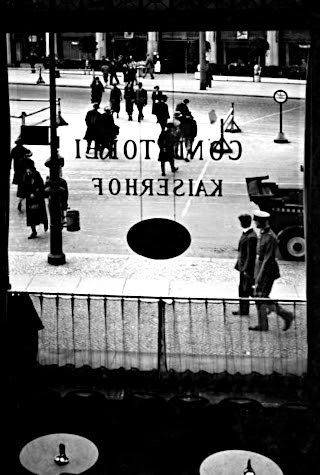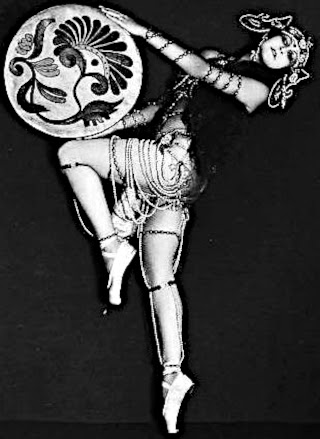This was the very moment of Obama's failure, when he allowed Summers, Geithner and Bernanke to establish the principle of "Too Big To Fail" and set up a financial oligarchy at the expense of taxpayers. We would have expected this out of the Treasury under Hank Paulson, but to see this kind of policy error favoring Wall Street over the US taxpayers from a government elected on the promise of reform is inexcusable, a disgrace.
Be Prepared For the Worst - Ron Paul
Bloomberg
Stiglitz Says U.S. Is Paying for Failure to Nationalize Banks
Nov. 2 (Bloomberg) -- Nobel Prize-winning economist Joseph Stiglitz said the world’s biggest economy is suffering because of the U.S. government’s failure to nationalize banks during the financial crisis.
“If we had done the right thing, we would be able to have more influence over the banks,” Stiglitz told reporters at an economic conference in Shanghai Oct 31. “They would be lending and the economy would be stronger.”
Stiglitz has stuck with his view even after the U.S. economy returned to growth in the third quarter and as banks’ share prices climbed this year.
U.S. Treasury Secretary Timothy Geithner, appearing yesterday on NBC’s “Meet the Press” program, said the country’s economic recovery hinges in part on banks taking more risk and restoring the flow of credit to businesses.
“The big risk we face now is that banks are going to overcorrect and not take enough risk,” Geithner said. “We need them to take a chance again on the American economy. That’s going to be important to recovery.”
President Barack Obama said on Oct. 24 that the nation’s lenders, supported by taxpayers in the crisis, need to “fulfill their responsibility” by lending to small businesses still struggling to get credit.
Companies such as Citigroup Inc. and Bank of America Corp. benefited from a $700 billion taxpayer-funded bailout package last year. In contrast, Obama said that too many small businesses are still short of money, adding that his administration will “take every appropriate step” to encourage banks to lend.
Bank Lending
“We have this very strange situation today in America where we have given banks hundreds of billions of dollars and the president has to beg the banks to lend and they refuse,” Stiglitz said. “What we did was the wrong thing. It has weakened the economy and has increased our deficit, making it more difficult for the future.”
While the U.S. economy grew at a 3.5 percent annual rate in the third quarter, the first expansion in more than a year, the Columbia University economist said the recession is “nowhere near” its end, citing rising unemployment and weak demand.
The U.S. government plans to alter the way that a similar rescue would be handled in the future. Draft legislation proposes that banks, hedge funds and other financial firms holding more than $10 billion in assets would pay to rescue companies whose collapse would shake the financial system. (And it is an inherently unfair plan that creates even additional moral hazard by penalizing sound banking by forcing it to pay for reckless bank management. - Jesse)
Citigroup and Bank of America shares have quadrupled from this year’s lows in March.
01 November 2009
Obama's Economic Policy Has Doomed the US to Stagnation - Or Worse
30 October 2009
Nine More Banks Fail with CIT a Packaged Bankruptcy While Gold Shines in a Jobless Recovery
There was tension-driven selling in the markets today despite the 'good news' in the headline economic numbers. The markets are on edge ahead of the ADP and BLS jobs numbers next week. The much touted theory of a 'jobless recovery' is started to show some big holes in credibility, as well it should.
Jobless Recovery
A jobless recovery is nothing more than a euphemism for a monetary asset bubble presenting an ongoing systemic moral hazard.
Yes, jobs growth lags GDP in the early stages, everyone knows this. A second year econ student might cite Okun's Law, although it is better called Okun's observation, to show that lag, but it is not relevant to this topic. Beyond early stage lags in the typical postwar recession, a business cycle contraction, what is meant by the jobless recovery is the post tech bubble recovery of 2001-5 wherein jobs growth lagged economic growth in a way we have not seen after any postwar recession, with the median wage never recovering. "Jobless recovery" is a relatively recent phenomenon in the economic lexicon, much younger than 'stagflation' which was thought highly unlikely if not impossible by economists based on their theories, until it happened.
It was the housing bubble and an explosion in unproductive financial activity crafted by the Fed and the Wall Street banks that provided the appearance of economic vitality in 2001-7. It was no genuine recovery despite the nominal GDP growth. It indicates a need to deflate the growth numbers more intelligently, if not more honestly, and future economists are likely to 'discover' this, although John Williams of Shadowstats has done a good job of demonstrating the distortions that have crept into US economic statistics. The tech bubble was perhaps an unfortunate response to the Asian currency crisis and fears of Y2K. What was done to promote recovery from the tech collapse and create the housing and derivatives credit bubble was pre-meditated and criminal.
The current state of economics is most remarkable for its arrogant complacency in the face of two failed bubbles, a near systemic failure, a pseudo-scientific perversion of mathematics exposed, and an incredible capacity for spin and self-delusion. The people wish to believe, and Wall Street and the government economists are all too willing to tell them whatever they wish to hear, for a variety of motives. And there is an army of salesmen and lobbyists and econo-whores touting this fraud around the clock.
The Failure of Financial Engineering
The next bubble should provide the coup de grâce when it fails, although the fraudsters might try and spin ten years of a stagflationary economy as 'the new normal.'
There are good reasons for this failure of American "monetary capitalism," and it has to do with an oversized financial sector and a surplus of white collar crime that both distort and drain the productive economy. The current approach is to pump money into a failed system without attempting to reform it, to fix its fundamental flaws, to make an honest accounting of the results. The result are serial bubbles and the foundation for long duration zombie economy with a grinding stagflation that may morph into a currency crisis and the fall and reissuance of the dollar, as we saw with the Russian rouble. It will stretch the political fabric of the US to the breaking point. This is how oligarchies and their empires fall.
CIT Staggers Into Bankruptcy
Trader confidence was shaken by more indications that business lender CIT will declare a preplanned bankruptcy next week.
Approaching Crash in Commercial Real Estate
Also roiling the markets was a shocking warning by billionaire Wilbur Ross of an approaching meltdown in the Commercial Real Estate market which has been anticipated and warned about by non-shill market analysts.
Gold Holds Steady
Gold showed a remarkable resilience today against determined short selling in the paper Comex markets. Here is a decent summary of the case that the gold bulls have been making, in addition to the standard observations about dollar weakness. Gold Bullion Market Reaching the Breaking Point
Bank Failures Hit 115
Meanwhile, nine more commercial banks rolled over this week. Calculated Risk reports that the unofficial FDIC list of problem US banks now numbers 500.
Here is the list from FDIC of all Official US Bank Failures since 2000.
All of the nine banks were taken over by the US Bank National Association (US Bancorp), and were part of the FBOP company in Oak Park, Illinois, one of the largest privately held bank holding companies in the US. It is reported that all nine were heavily invested in real estate lending.
California National is the fourth largest bank failure this year. It lost about $500 million on heavy investments in Fannie Mae and Freddie Mac preferred shares, in addition to overwhelming losses in California real estate.
North Houston Bank, Houston, TX, with approximately $326.2 million in assets and approximately $308.0 million in deposits was closed. U.S. Bank National Association, Minneapolis, MN has agreed to assume all deposits. (PR-195-2009)
Madisonville State Bank, Madisonville, TX, with approximately $256.7 million in assets and approximately $225.2 million in deposits was closed. U.S. Bank National Association, Minneapolis, MN has agreed to assume all deposits. (PR-195-2009)
Citizens National Bank, Teague, TX, with approximately $118.2 million in assets and approximately $97.7 million in deposits was closed. U.S. Bank National Association, Minneapolis, MN has agreed to assume all deposits. (PR-195-2009)
Park National Bank, Chicago, IL, with approximately $4.7 billion in assets and approximately $3.7 billion in deposits was closed. U.S. Bank National Association, Minneapolis, MN has agreed to assume all deposits. (PR-195-2009)
Pacific National Bank, San Francisco, CA, with approximately $2.3 billion in assets and approximately $1.8 billion in deposits was closed. U.S. Bank National Association, Minneapolis, MN has agreed to assume all deposits. (PR-195-2009)
California National Bank, Los Angeles, CA, with approximately $7.8 billion in assets and approximately $6.2 billion in deposits was closed. U.S. Bank National Association, Minneapolis, MN has agreed to assume all deposits. (PR-195-2009)
San Diego National Bank, San Diego, CA, with approximately $3.6 billion in assets and approximately $2.9 billion in deposits was closed. U.S. Bank National Association, Minneapolis, MN has agreed to assume all deposits. (PR-195-2009)
Community Bank of Lemont, Lemont, IL, with approximately $81.8 million in assets and approximately $81.2 million in deposits was closed. U.S. Bank National Association, Minneapolis, MN has agreed to assume all deposits. (PR-195-2009)
Bank USA, National Association, Phoenix, AZ, with approximately $212.8 million in assets and approximately $117.1 million in deposits was closed. U.S. Bank National Association, Minneapolis, MN has agreed to assume all deposits. (PR-195-2009)
29 October 2009
Healthcare and Financial Reform: Don't Have a Cow, Man


Change we need. But who is we?
We the people, or we the campaign contributors and corporate power brokers?
"I never thought it was humanly possible, but this both sucks and blows.”
He straddles all, so pleases none,
And spread too thin, gets nothing done.
Aye, carumba.
Congress Ignores and Then Censors Only Witness Critical of Derivatives Banking Reform
A Brilliant Warning On Robert Rubin's Proposal to Deregulate Banks, circa 1995
There is little doubt in this mind that the GDP number will be revised lower, and the chain deflator lowball will prove to be transitory, and the recovery will be ephemeral, at least based on real numbers. The Clunkers programs pulled sales forward, which is a useful thing only if there is the follow up of systemic reform. The consumer is flat on their back, and median wages and employment are going nowhere. One can stoke monetary inflation with enough Fed expansion, but without the vitality that bestows permanence and self-sufficiency.
 A reader sent in this prescient warning from 1995, when then Treasury Secretary Robert Rubin, late of Goldman Sachs, mentor to Larry and Timmy of the current US ship of state, wanted to unleash the power of the big money center banks to ensure their "efficiency and international competitiveness."
A reader sent in this prescient warning from 1995, when then Treasury Secretary Robert Rubin, late of Goldman Sachs, mentor to Larry and Timmy of the current US ship of state, wanted to unleash the power of the big money center banks to ensure their "efficiency and international competitiveness."If only the US had rejected the Rubin - Greenspan doctrine then, and firmly said no to freewheeling finance, and not succumbed to the hundreds of millions of dollars in lobbying and donations spread about Washington in that 1990's campaign by Wall Street that culminated in Fed preemptive action, followed by a massive lobbying campaign led by Sandy Weill.
In December 1996, with the support of Chairman Alan Greenspan, the Federal Reserve Board issues a precedent-shattering decision permitting bank holding companies to own investment bank affiliates with up to 25 percent of their business in securities underwriting (up from 10 percent).
This expansion of the loophole created by the Fed's 1987 reinterpretation of Section 20 of Glass-Steagall effectively renders Glass-Steagall obsolete. Virtually any bank holding company wanting to engage in securities business would be able to stay under the 25 percent limit on revenue. However, the law remains on the books, and along with the Bank Holding Company Act, does impose other restrictions on banks, such as prohibiting them from owning insurance-underwriting companies.
In August 1997, the Fed eliminates many restrictions imposed on "Section 20 subsidiaries" by the 1987 and 1989 orders. The Board states that the risks of underwriting had proven to be "manageable," and says banks would have the right to acquire securities firms outright...
As the push for new legislation heats up, lobbyists quip that raising the issue of financial modernization really signals the start of a fresh round of political fund-raising. Indeed, in the 1997-98 election cycle, the finance, insurance, and real estate industries (known as the FIRE sector), spends more than $200 million on lobbying and makes more than $150 million in political donations. Campaign contributions are targeted to members of Congressional banking committees and other committees with direct jurisdiction over financial services legislation.
PBS Frontline: The Long Demise of Glass-Steagall
One might be tempted to conclude from this that they bought the attention of the Congress for their agenda then, and based on additional substantial contributions, have held it ever since.
 As you may recall, it was in December, 1996 when Alan Greenspan made his famous 'irrational exuberance' speech. And then shortly thereafter laid the groundwork for the tech bubble of 1999, and the series of bubbles that are the basis of the American economy even today, and the long twilight of the US dollar.
As you may recall, it was in December, 1996 when Alan Greenspan made his famous 'irrational exuberance' speech. And then shortly thereafter laid the groundwork for the tech bubble of 1999, and the series of bubbles that are the basis of the American economy even today, and the long twilight of the US dollar.Based on our read, the financial reform plans crafted by Tim Geithner, Larry Summers, and their friends on Wall Street is merely a continuation of the Rubinomics. Is there any wonder, as we have Rubinomics Recalculated by Obama.
Thanks to Mark for sharing this on a day in which I had not intended to post anything. There seem to be about 12,000 regular visitors to Le Cafe each day. Although this is not a lot by internet standards, I have to say that based on their valuable comments and exceptionally well-informed messages sent in by email, that when it comes to astute readers, we have an embarrassment of riches. And for this we give thanks and are grateful.
NY Times
End Bank Law and Robber Barons Ride Again
Published: Sunday, March 5, 1995
To the Editor:
Re "For Rogue Traders, Yet Another Victim" (Business Day, Feb. 28) and your same-day article on Treasury Secretary Robert E. Rubin's proposal to eliminate the legal barriers that have separated the nation's commercial banks, securities firms and insurance companies for decades: The American Bankers Association, Senator Alfonse M. D'Amato, Representative Jim Leach and Treasury Secretary Rubin are gravely misguided in their quest to repeal the Glass-Steagall Act.
Their contention that insurance companies, commercial banks and securities firms should be freed from legislative obstructions is predicated on fallacious, historically inaccurate statements. If the Baring Brothers failure does not give them pause, a history lesson is our only hope before the Administration and bank lobby iron out their differences and set the economy back 90 years.
The argument that American financial intermediaries will become "more efficient and more internationally competitive" is false. The American financial system is the most stable, most profitable and most dynamic in the world.
The notion that Glass-Steagall prevents American financial intermediaries from fulfilling their utmost potential in a global marketplace reflects inadequate understanding of the events that precipitated the act and the similarities between today's financial marketplace and the market nearly a century ago.
Although Glass-Steagall was enacted during the Great Depression, it was put in place because the Aldrich-Vreeland Act of 1908, the blue-sky laws following 1910 and the Federal Reserve System of 1913 failed to keep the concentration of financial power in check. The investment climate that ultimately led to Glass-Steagall was one filled with emerging markets, interlocking control of productive resources and widespread bank ownership of securities.
Ever since railroad securities began driving secondary capital markets in the late 1860's, "emerging markets" have existed for investors looking for high-yield opportunities, and banks have been primary agents in industrial development. In the 19th century, emerging markets were scattered throughout the United States, and capital flowed into them from New York, Boston, Philadelphia and London. In the same way, capital flows from the United States, Japan and England to Latin America and the Pacific rim -- today we just have more terms to define the market mechanisms.
The economy and financial markets were even more interconnected in the 19th century than now. Commercial and investment banks could accept deposits, issue currency, underwrite securities and own industrial enterprises. With Glass-Steagall lifted, we will chart a course returning us to that environment.
J. P. Morgan and Andrew Mellon made their billions through inter locking directorates and outright ownership of hundreds of nationally prominent enterprises. Glass-Steagall is one crucial piece of a litany of legislation designed to place checks and balances on the concentration of financial resources. To repeal it would be tantamount to bringing back the days of the robber barons.
The unbridled activities of those gifted financiers crumbled under the dynamic forces of the capital marketplace. If you take away the checks, the market forces will eventually knock the system off balance.
MARK D. SAMBER
Stamford, Conn.
Feb. 28, 1995
The writer is a management consultant specializing in business history.
28 October 2009
About The Jobless Recovery ....
For the first time we had a 'jobless recovery' after the tech bubble bust thanks to the wonders of Greenspan's monetary expansion and the willingness (gullibility?) of the average American to assume enormous amounts of debt, largely based on home mortgages, the house as ATM phenomenon. Not to mention the large, unfunded expenditures of the government thanks to tax cuts and multiple wars.

Now the pundits are talking about the hopes for another jobless recovery.
Who is going to go deeply into debt this time? It looks like its the government's turn. And the expectation is that foreigners will continue to suck up the debt.

If you think this explosion of Federal debt will facilitate a stronger US dollar you might be suffering from ideological myopia or some other delusion.
Some years ago we forecast that the financiers and their elites would take the world down this road of leveraged debt and malinvestment, and then make you an offer that they think you cannot refuse. They will seek to frighten you with a collapse of the existing financial order, because that is what they fear the most themselves, for their own unique positions of power.
The offer will be a one world currency, which is a giant step towards a one world government, managed by them of course. Once you control the money, local fiscal and social preferences start to matter less and less.
This theory seems more plausible today than it did then.
Restoring Glass-Steagall
"Successful crime is dignified with the name of virtue; the good become the slaves of the wicked; might makes right; fear silences the power of the law." Lucius Annaeus Seneca
Restoring Glass-Steagall is such an obvious move that one has to wonder why it is not being more seriously considered.
Granted, it took a multi-year lobbying effort and the expenditure of many millions of dollar to subvert a national regulatory and political process to overturn it, largely led by Sandy Weill of Citigroup. Frontline: The Long Demise of Glass-Steagall.
And with the return of the Clinton crowd as Obama's key financial advisers, led by Larry Summers and young Tim, supplemented by more mercenaries from the-investment-bank-that-must-not-be-named, perhaps it is unreasonable to expect the Reformer to enact such a simple, time-tested reform.
Perhaps Barney Frank and Chris Dodd can bring the Princes of Wall Street down to Washington again, profusely thank them for taking time from their busy day to speak to the people's representatives, privately thank them for their generous campaign contributions, and simply ask them what they will accept as regulation again.
It is important to bear this in mind, because it tends to knock down the assertion that the current financial crisis is somehow an act of God, something that just happened. There was an intent to subvert the regulatory process, to increase leverage beyond what has long been known to be prudent, and to engage in systemic fraud with a group of enables and agencies, such as the ratings firms, in order to reap fabulous personal profits for a small group at the expense of the many. There was planning, premeditation, malice aforethought. They may not have intended to harm; they just did not care. They really truly did not care, if they got theirs.
Until the banks are restrained, and the financial system reform, and balance restored to the economy, there will be no sustained recovery.
And there can be no better start than to stop the gambling with the public money that is the core of the existing US banking system. The parallels with organized crime and the subversion of the public interest through graft and corruption are compelling. And one thing we must accept is that the financiers will never be able to reform themselves, to regulate themselves, to even tell the truth overmuch about regulation while they are still 'in the game.' It goes against their very nature, their creed, the rules of their profession. They keep what they kill, and everything that is not theirs is fair game.
How bad does it have to get in the US before the people finally speak out? Wait and see, because it will be getting worse, a lot worse than you might imagine. And each day of delay adds a pound of misery for your children and grandchildren to carry. Do you really think so little of them?
Volcker’s AdviceAbove all, reforming the cesspool that is the US electoral process of campaign financing, which is an advert for graft and soft bribery, would help as well. There is no foolproof regulatory process when those who control it are 'on the take' or even more openly working for those who seek to subvert it.
NY Times
October 22, 2009
To the Editor:
Re “Volcker’s Voice, Often Heeded, Fails to Sell a Bank Strategy” (front page, Oct. 21):
As another older banker and one who has experienced both the pre- and
post-Glass-Steagall world, I would agree with Paul A. Volcker (and also Mervyn
King, governor of the Bank of England) that some kind of separation between
institutions that deal primarily in the capital markets and those involved in
more traditional deposit-taking and working-capital finance makes sense.
This, in conjunction with more demanding capital requirements,
would go a long way toward building a more robust financial sector.
John S. Reed
New York, Oct. 21, 2009
The writer is retired chairman of Citigroup.
Tavakoli on Goldman's Lies of Omission
Lies of omission and forgetfulness are difficult to prove and even harder to prosecute. "Not that I recall" and "not to my knowledge" are favorite defense statements, adornments to a plea of inanity much favored by the corporate upper crust, made famous by Skilling and Lay. Among politicians it is known by the weighty phrase, plausible deniability.
Janet Tavakoli asks, Did Goldman Lie? One is tempted to ask, 'were their lips moving?'
But why the bluff? Why did Goldman have to pretend it was not concerned at all about AIG, even as the phone records show they were involved in intense and continuing discussions at the highest levels in the bailouts, with a unique and privileged presence in discussions with the government and the Fed in which their own place in the bailout queue must have been surely discussed? And at the time their own man was the Chairman of the NY Fed.
And as someone asked, Why pick on Goldman? Well, they seem to be at the center of everything.
No answers yet, and there may never be a way to penetrate the financial Star Chamber that is the Obama Treasury and the NY Fed. But here is some additional information worth reading.
Goldman's Lies of Omission
By Janet Tavakoli
October 28, 2009
In my opinion, David Viniar’s (CFO of Goldman Sachs) comments in the fall of 2008 were a lie, and for that matter, Lloyd Blankfein’s (CEO of Goldman Sachs) later comments to the Wall Street Journal were disingenuous.
In the context of what was happening near the time of AIG’s implosion, the key question was “What is going on between Goldman and AIG?” Their rhetoric surrounding this issue is a deft dodge. They may claim they didn’t “technically” lie, but Goldman’s business exposure to AIG posed both credit risk and reputation risk. They seem to overlook elements of the former and put insufficient value on the latter.
Goldman should have plainly stated that it was owed billions in additional collateral from AIG — after already having collected billions — due to credit default swap contracts and other trading positions. Whether or not Goldman thought its credit risk was totally hedged is a separate, albeit important issue, and I’ll get to that later.
Among the proximate causes of AIG’s failure were previous calls for collateral made by its credit default swap trading counterparties, including Goldman Sachs. They were entitled to pressure AIG on its prices and demand more collateral; I had publicly challenged AIG’s prices myself more than a year earlier. These actions gave a major push to AIG’s subsequent credit downgrade, which tripped contract triggers that AIG had unwisely permitted its more clever counterparties to insert. (The credit default swap market is not standardized.) This meant AIG had to come up with collateral equal to the entire remaining amount of the credit default swap contract.
Unfortunately, AIG was essentially bankrupt at this point and it couldn’t meet its obligations. The government could have stepped in and renegotiated its contracts. [Goldman’s “hedges” might have disputed whether a reduced payment triggered a restructuring event, if applicable, in their contracts.] But that isn’t what happened...
Click here for the rest of the story: Goldman's Lies of Omission - (pdf) Tavakoli Finance
27 October 2009
GMAC Becomes First 'Bank' To Come Back for a Third Bailout

There will be more players rolling over, and the poorly connected, broken banks will come staggering back from the land of green shoots with leaking balance sheets and bleeding income statements. The big Banks will keep taking chips and tips from Ben and Tim, a little peek at the hole cards, a friendly dealer on the flop, until the time comes to turn over that last river card, and move on to a differet town and a new game.
Where's GMAC at this table? Are you kidding me? They are outside parking cars.
Wall Street Journal
GMAC Asks for Fresh Lifeline
By DAN FITZPATRICK and DAMIAN PALETTA
Lender in Advanced Talks for Third Slug of Taxpayer Cash -- at Least $2.8 Billion
In a stark reminder of how some battered financial firms remain dependent on government lifelines, GMAC Financial Services Inc. and the Treasury Department are in advanced talks to prop up the lender with its third helping of taxpayer money, people familiar with the matter said.
The U.S. government is likely to inject $2.8 billion to $5.6 billion of capital into the Detroit company, on top of the $12.5 billion that GMAC has received since December 2008, these people said. The latest infusion would come in the form of preferred stock. The government's 35.4% stake in the company could increase if existing shares eventually are converted into common equity.
The willingness by Treasury officials to deepen taxpayer exposure to GMAC reflects the troubled company's importance to the revival of the auto industry. Founded in 1919, GMAC has $181 billion in assets and is a major financier for 15 million borrowers and thousands of General Motors and Chrysler car dealerships.
The new capital would help firm up GMAC's balance sheet and solidify its auto-loan business. GMAC provides the vast majority of wholesale financing for GM dealerships across the country, meaning thousands would be unable to bring new vehicles onto their lots if GMAC were to collapse.
Federal officials also are moving to shore up GMAC's ability to fund its daily operations, with the Federal Deposit Insurance Corp. telling the company Tuesday the agency will guarantee an additional $2.9 billion in debt, according to people familiar with the discussions. The FDIC guarantee will make it easier for the company to sell debt to investors. The FDIC backed $4.5 billion in GMAC-issued debt earlier this year.
The FDIC approval came just four days before the expiration of the regulator's program that guarantees debt issued by certain banks. It ended months of tense negotiations between GMAC and regulators. Without a deal, the company would have been forced to further reduce its lending volume. New-car loans by the company tumbled 55% to $5.6 billion in the second quarter from a year earlier.
As part of the agreement, GMAC agreed to keep interest rates on deposit accounts offered through its banking unit at certain levels, according to people familiar with the situation.
While GMAC would be the only U.S. company to get three capital injections from the government since the financial crisis erupted two years ago, thousands of banks and other financial firms remain weakened by exposure to fallen real-estate values and clobbered financial markets.
Among U.S. banks that got a total of $204.64 billion in aid through the Troubled Asset Relief Program, just one-third of the capital has been repaid so far. Government officials are skeptical that some banks now wanting to escape the government's grip are strong enough to do so, with Bank of America Corp.'s attempt to repay bailout funds snagged by a disagreement over how much additional capital the bank must raise to satisfy regulators, people familiar with the situation said...
The US Dollar Rally of 2008: The Consequence of a Bull Market in Fraud

"Highlighting the international dimensions of the financial crisis that began in the fall of 2007, authors Niall Coffey, Warren B. Hrung, Hoai-Luu Nguyen and Asani Sarkar examine the difficulties international firms encountered obtaining U.S. dollars and the ensuing effects on the foreign exchange (FX) swap market. Analysis shows that as firms increasingly turned to the FX swap market to obtain funding, the dollar “basis”—the premium paid for dollar funding—became persistently large and positive, primarily as a result of higher funding costs paid by smaller firms and non-U.S. banks." The Global Financial Crisis and Offshore Dollar Markets
Further, the latest data from BIS shows that the dollar rally tracked the acquisition of eurodollars with a significant correlation. This is shown on the chart at the right.
After the Federal Reserve alleviated the short squeeze through dollar forex swaps "The Fed's Currency Swaps" with the central banks in the affected regions, the dollar squeeze dissipated and the dollar fairly quickly resumed its downward trend. There is a case to be made that some of the big US money center banks were using the dollar shortage to reap windfall profits, but this could have also been a side effect of the seizing in the short term credit markets.
But much of the European outrage, as least, was in feeling that they had been 'set up' by the very banks that had sold them the foully rated instruments in the first place. A classic face ripping, as they say at Wall and Broad. And this similar to the reason is why the Chinese government declared that its own institutions could walk away from derivatives arrangements that had been sold to them by the Wall Street wiseguys under false pretenses. US towns and states are not so fortunate it appears.
What does this mean? It implies rather strongly that those looking for a repeat of the sharp dollar rally from last year are very likely to be sadly disappointed.
This was no flight to safety; this was the consequence of a massive fraud in dollar denominated financial assets having been sold to gullible foreign investors and their banks. Note too that the eurodollar positions do NOT account for the dollar rally in 2006. This is what was expected, because there was no corresponding spike in LIBOR to indicate a squeeze. Rather, that earlier dollar rally was due to foreign investment in US equities and financial assets at the height of the post tech crash Dollar Assets Bubble.
Here is a brief piece on The Backwardation in LIBOR and Its Divergence from Effective Fed Funds which shows the signs of the 'eurodollar squeeze' as opposed to net foreign investment in financial assets.
The foreign banks have now unwound a significant amount of the dodgy US dollar financial assets that caused the short squeeze through their fraudulent valuations.
Yes, there will be more rallies in the ongoing decline in the US dollar. There always are countertrends in every long term trend. This is how traders make and lose their gains, as the market makers skin them slowly but surely. We can only wonder for now how much money has come into the US equity and bond bubble in the past six months, and how much is leveraged via the dollar carry trade.
But we ought not to see such a large rally in the dollar again unless there is a precipitous decline in stocks that forces a painful unwinding of the dollar carry trade. Foreign banks ought to be on the lookout for this development, because it is in their regions that the short squeezes have most of their effect. The Fed is awash in dollars and does own a printing press, and is not afraid to use it.
And for those desperately waiting for a free ride and easy money from a synthetic dollar short on debt, they should be reminded that the chief monetarist himself, Milton Friedman, also reminded that "There Ain't No Such Thing As a Free Lunch."
Or more civilly perhaps, "even fraud has its limits in conferring more value upon that which has less."






























